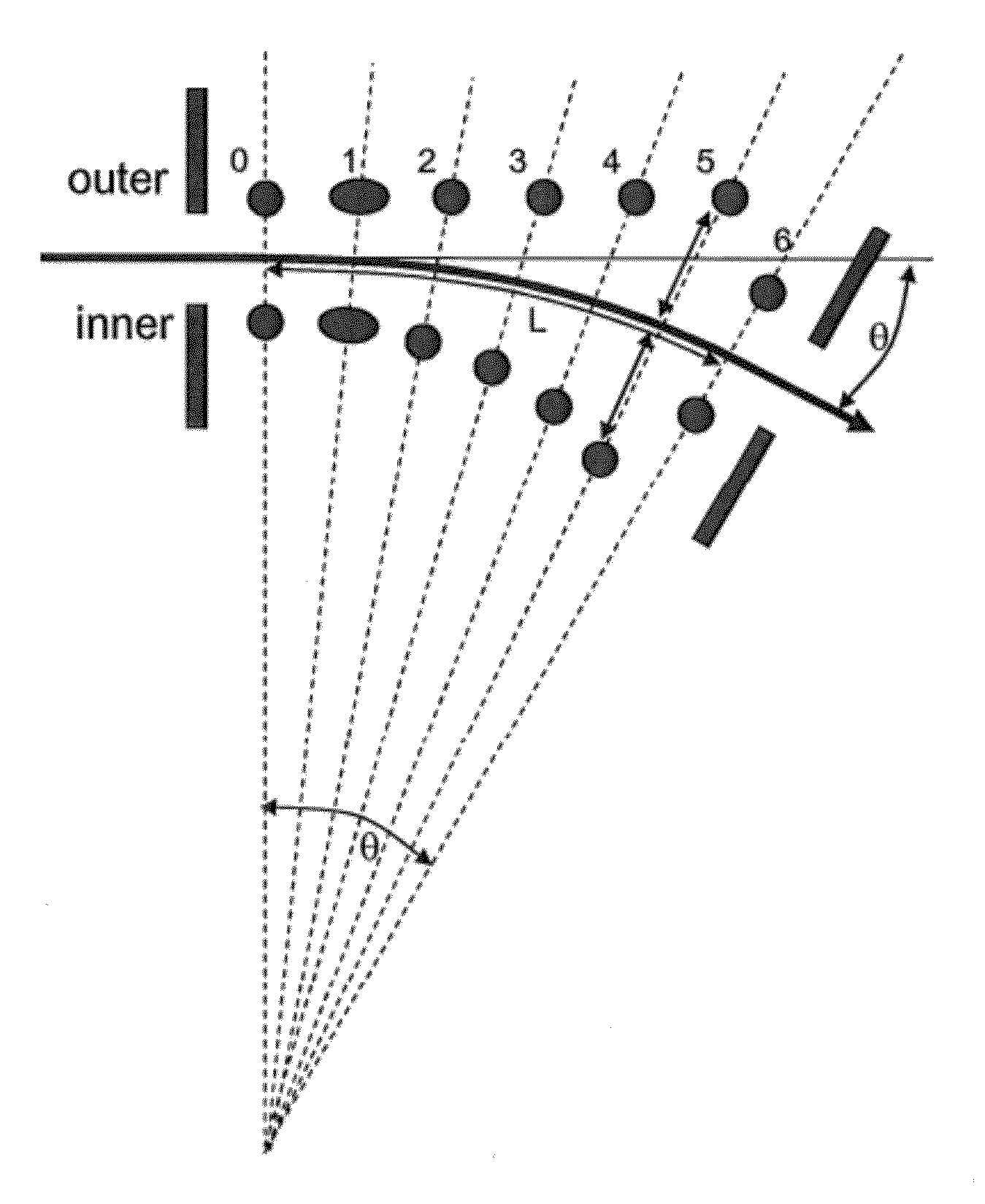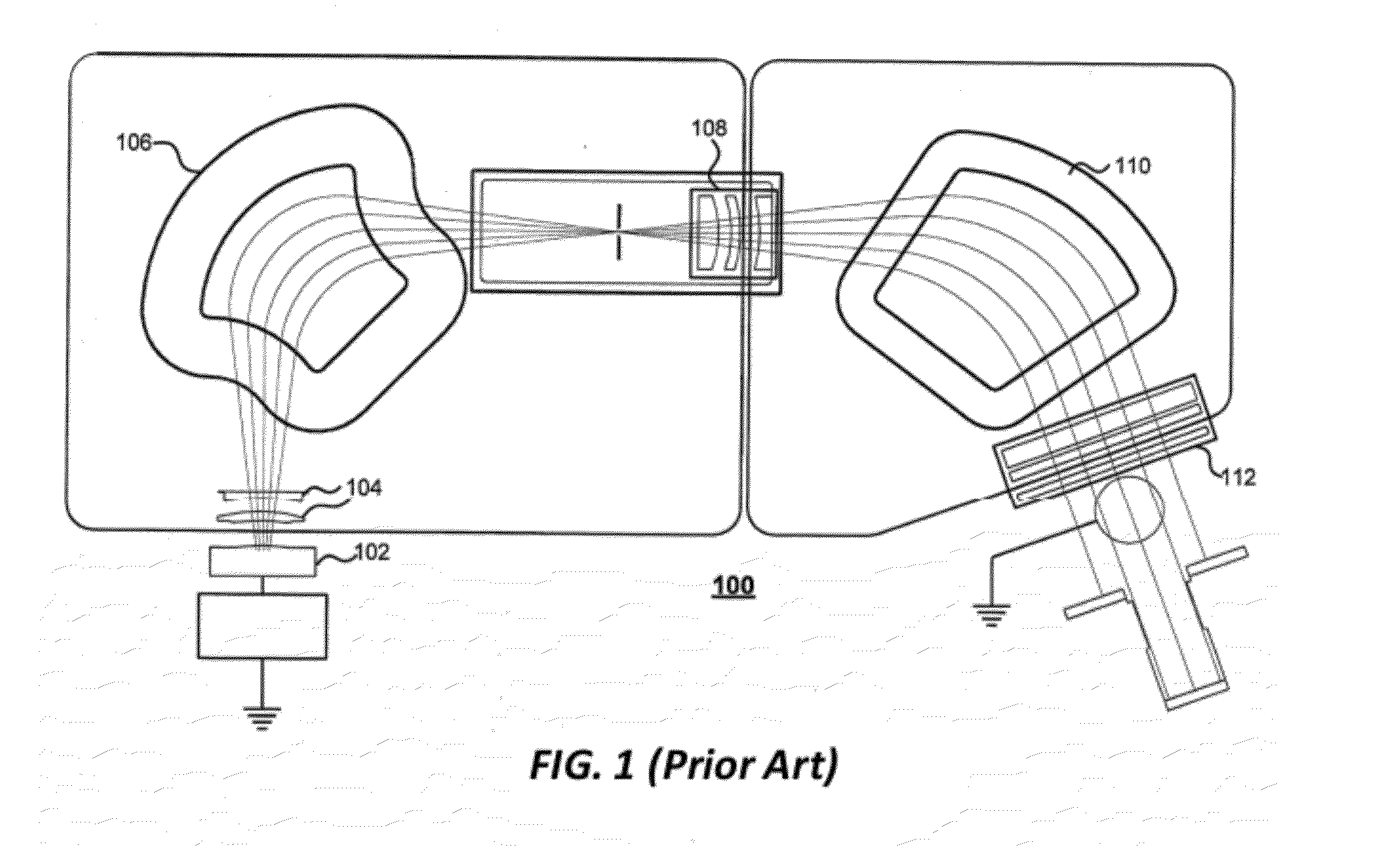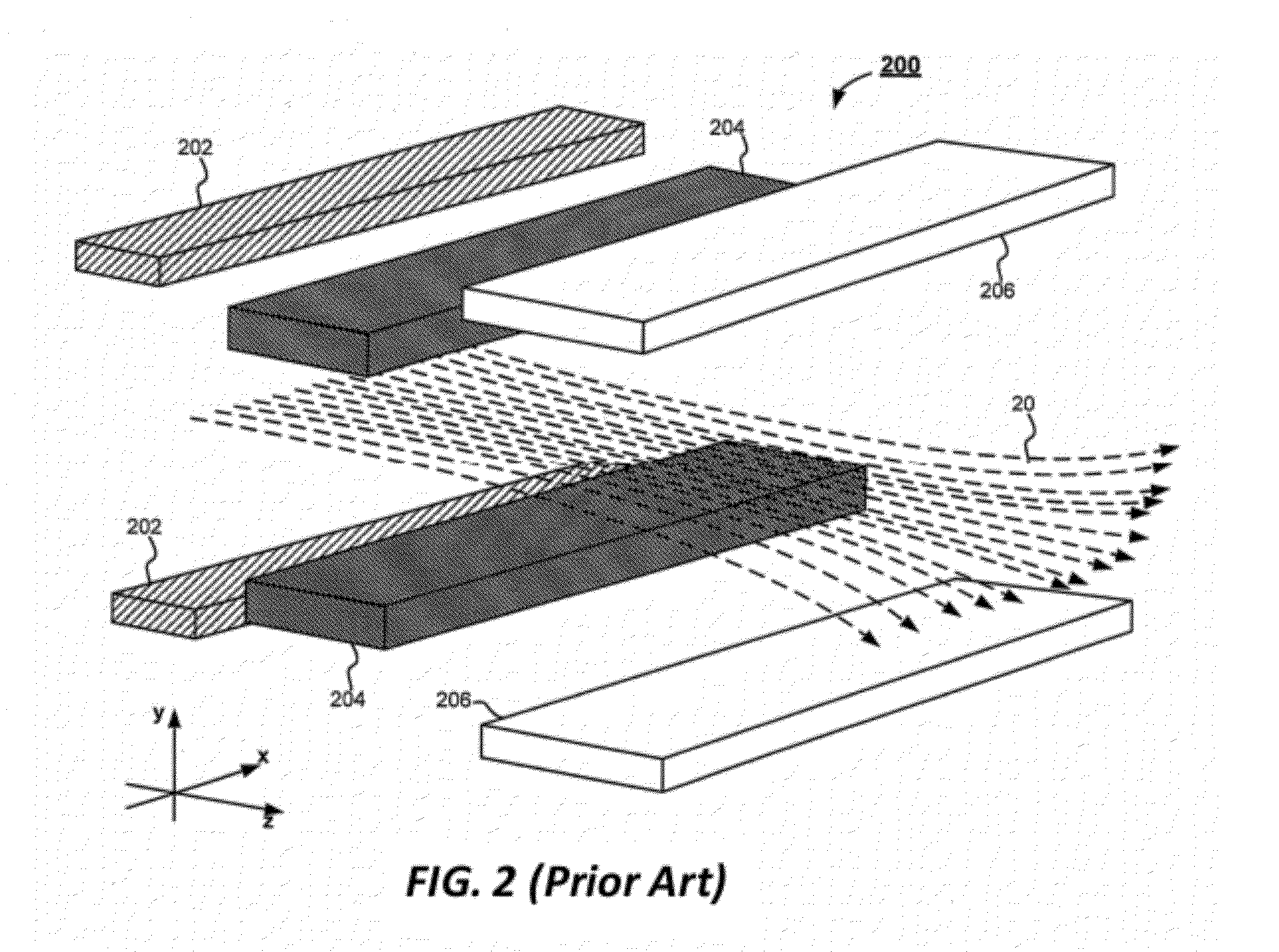Method and apparatus for controlling an electrostatic lens about a central ray trajectory of an ion beam
a technology of electrostatic lens and ion beam, which is applied in the direction of beam deviation/focusing by electric/magnetic means, instruments, and therapy, etc., can solve the problems of difficult ion beam tuning, inability to readily achieve, and conventional systems and methods do not provide a solution for independent control of ion beam deflection and/or focus
- Summary
- Abstract
- Description
- Claims
- Application Information
AI Technical Summary
Benefits of technology
Problems solved by technology
Method used
Image
Examples
Embodiment Construction
[0026]The present invention will now be described more fully hereinafter with reference to the accompanying drawings, in which preferred embodiments of the invention are shown. This invention, however, may be embodied in many different forms and should not be construed as limited to the embodiments set forth herein. Rather, these embodiments are provided so that this disclosure will be thorough and complete, and will fully convey the scope of the invention to those skilled in the art. In the drawings, like numbers refer to like elements throughout.
[0027]To solve the problems with conventional lens configurations, an improved lens comprising an asymmetric electrostatic lens configuration is disclosed. The asymmetric electrostatic lens configuration may be a graded deceleration lens that may include one or more variable-control suppression / focusing electrodes. These electrodes may include a variety of shapes, curvatures, positions, materials, and / or configurations that are independent...
PUM
 Login to View More
Login to View More Abstract
Description
Claims
Application Information
 Login to View More
Login to View More - R&D
- Intellectual Property
- Life Sciences
- Materials
- Tech Scout
- Unparalleled Data Quality
- Higher Quality Content
- 60% Fewer Hallucinations
Browse by: Latest US Patents, China's latest patents, Technical Efficacy Thesaurus, Application Domain, Technology Topic, Popular Technical Reports.
© 2025 PatSnap. All rights reserved.Legal|Privacy policy|Modern Slavery Act Transparency Statement|Sitemap|About US| Contact US: help@patsnap.com



